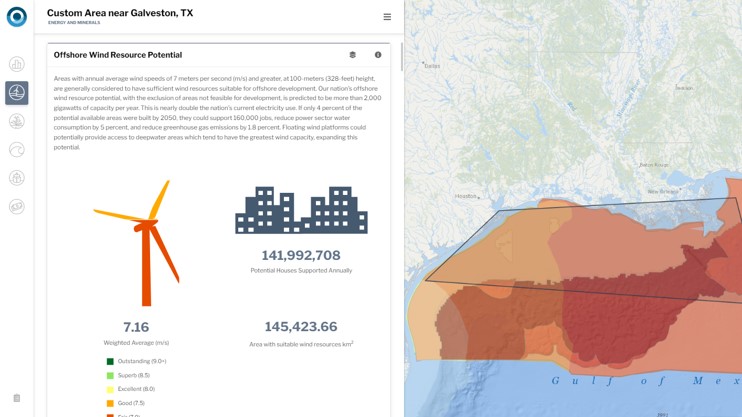Offshore Wind Energy
The need for offshore wind energy in U.S. waters has expanded in recent years and is critical in mitigating climate change and growing the New Blue Economy. In support of the Biden-Harris Administration’s goal to deploy 30 gigawatts of offshore wind by 2030, NOAA is committed to this effort. NCCOS has partnered with the Bureau of Ocean Energy Management (BOEM), the lead agency for offshore energy development, to help inform their selection for Wind Energy Areas.
Areas of Focus
What We Do
The ocean is teeming with data and information, but maps quickly become crowded, overwhelming, and difficult to understand. Our spatial modelers use existing data for the ocean space and create a suitability model for regions or areas of interest. The suitability model compiles all the data into a more simplified format that identifies areas with minimal conflicts within the desired ocean area. This work supports BOEM’s decision-making to identify optimal locations for offshore wind development while minimizing conflicts to the environment and other ocean industries. Learn more about our offshore wind energy efforts.
NOAA and BOEM Resources

Combining BOEM’s offshore planning and regulatory responsibilities with NOAA’s scientific ocean knowledge and technical skills helps ensure sustainable offshore wind development. These resources reflect this extensive partnership.
Featured Social Science Stories
From Around the Field
Partners and Collaborators
We partner with many agencies and organizations to get the best data available needed for offshore wind energy planning. We engage heavily with the following entities, but have collaborated with many others.
- Department of Defense, including U.S. Coast Guard, and U.S. Army Corp of Engineers
- Environmental Protection Agency
- Fishery management councils and commissions
- Ports and other ocean industries
- Research and academia
- State agencies
- Social, cultural, tribal, and other non-governmental organizations
- U.S. Fish and Wildlife Service
- Various NOAA offices
Featured Stories

Socioeconomic Dimensions of Offshore Wind Energy Development
With offshore wind energy being a relatively new installation in U.S. waters, NCCOS social scientists are exploring the perception of the general public.
Where We Work
The NCCOS Social Science team has focused efforts regarding offshore wind in the several locations.